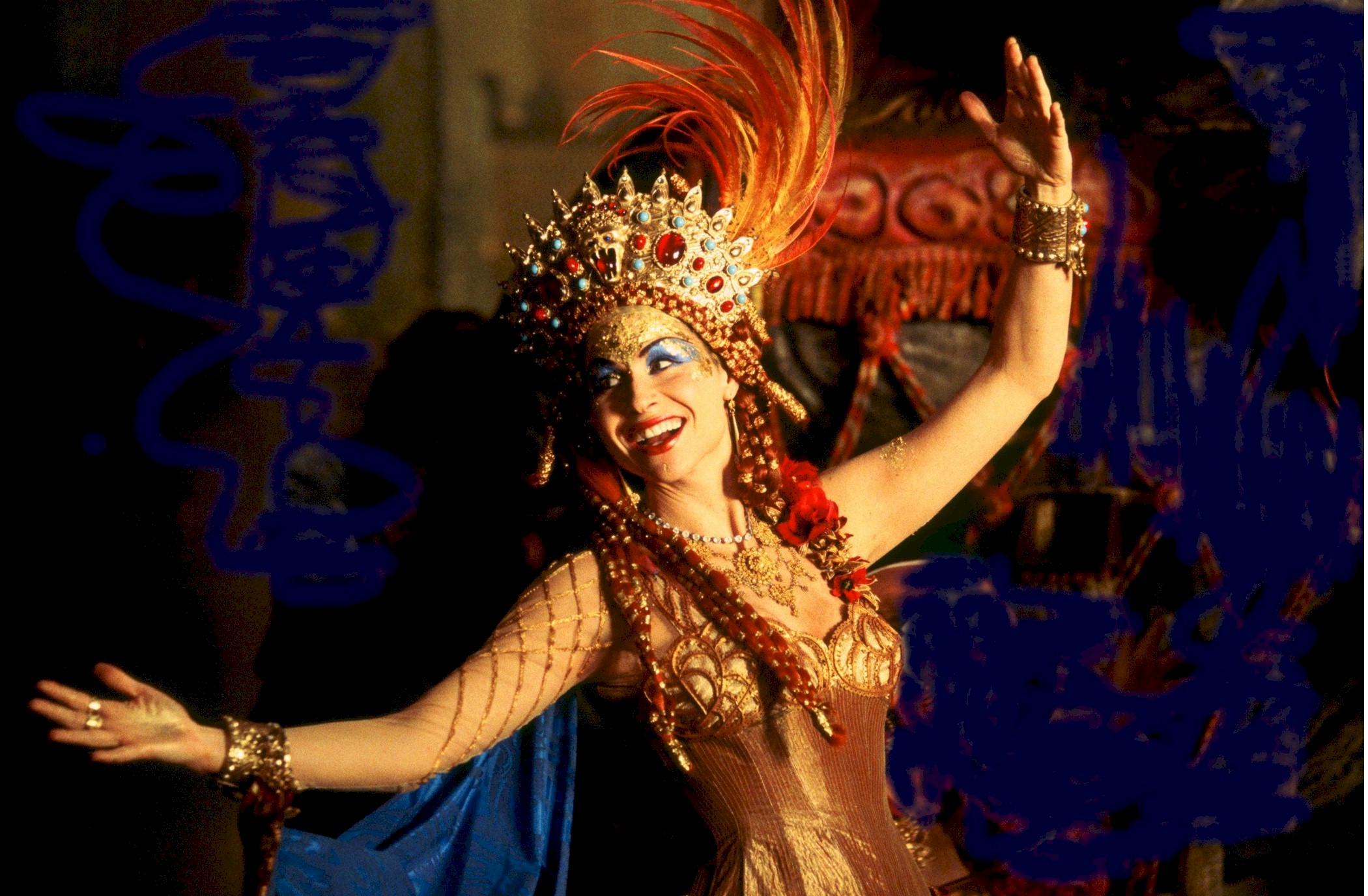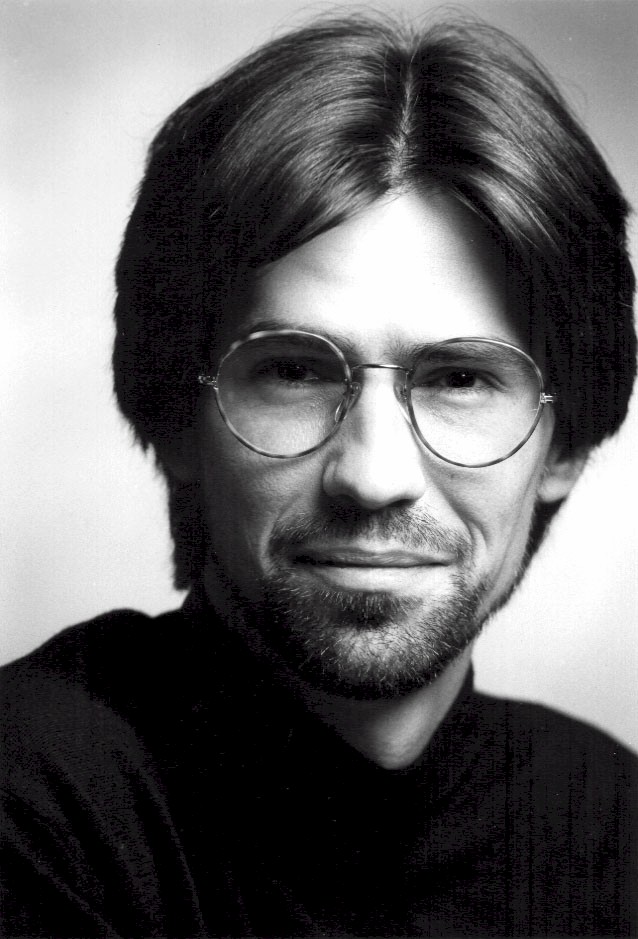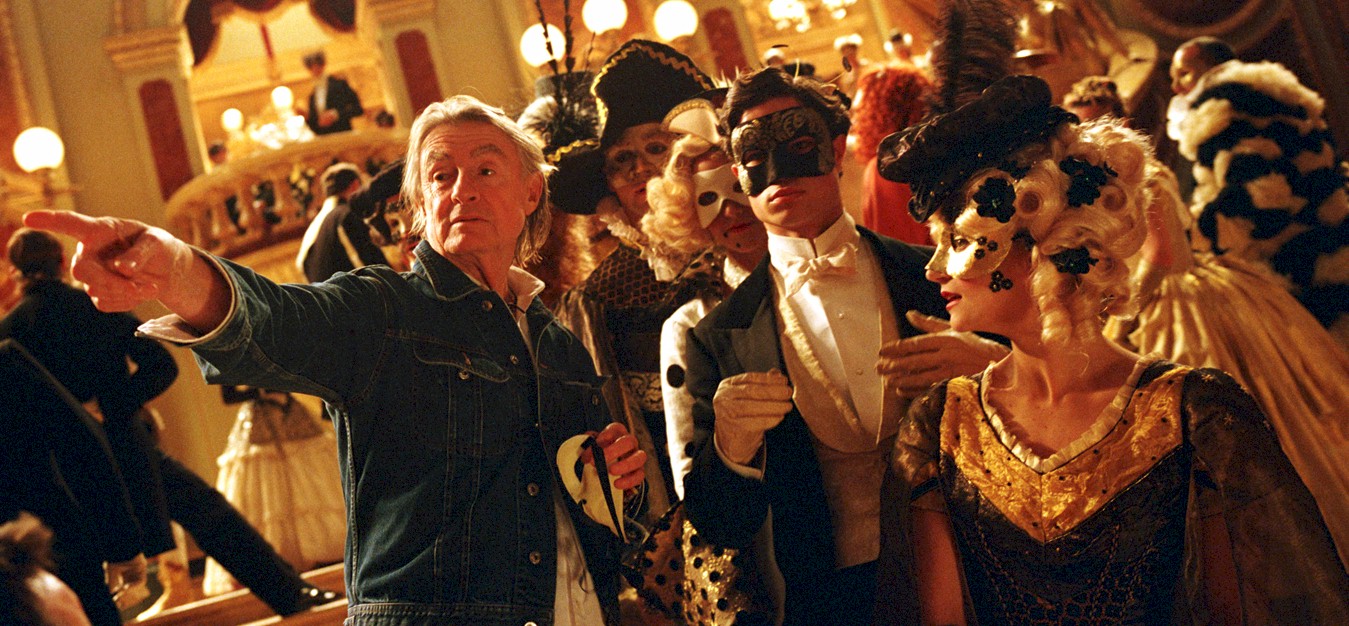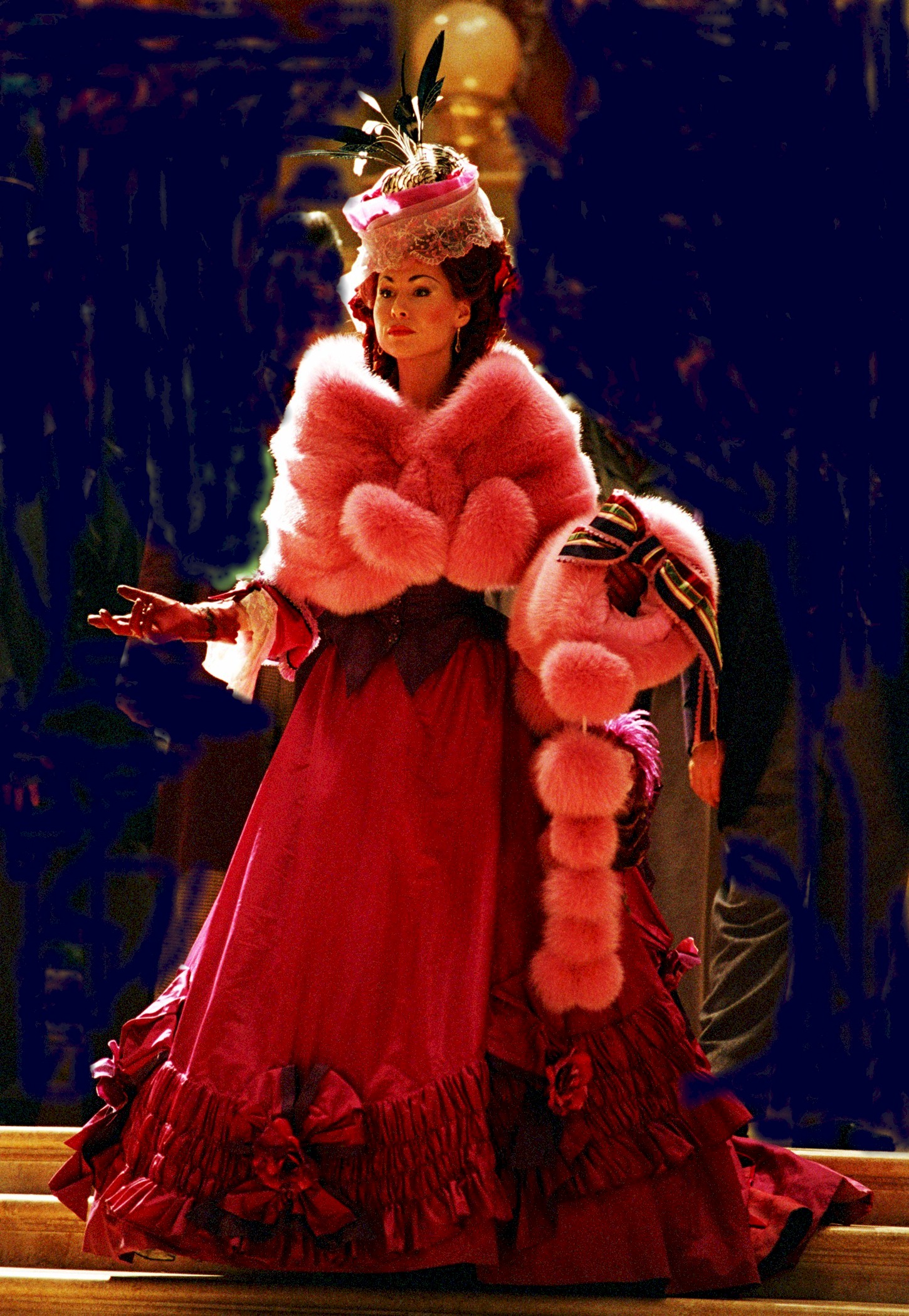


Part Two
There's never been a holiday season with so much theater-related product in the market place. You'll have no problem finding a theater or arts gift for that special someone - or yourself! The list is long: books, DVDs, CDs and more. There's something for everyone - even if you're on a limited budget. If you're not, you're going to have some festive holidays! Of course, there's the gift that never fails to please: tickets to a Broadway or Off Broadway show!
Need a break? The holidays: rush, rush; wrap, wrap; and then it's all over in a flash and you're eating turkey for the next week. For 22 years, Gerard Alessandrini has been an unstoppable force in parodying the creations and creators of Broadway's biggest shows - flops and hits.
The latest installment of his always-good-for-a-few-hundred-laughs Forbidden Broadway [Douglas Fairbanks Theatre, 432West 42nd Street] takes a nod from TVs Law & Order franchise for its not so subtle subtitle, Special Victims Unit.
Ron Bohmer, Megan Lewis, Jason Mills and Jennifer Simard are a multi-talented ensemble - all excellent vocalists - keep busy doing impersonations, singing their anthem ["There's No Broadway Like Our Broadway"] and scathingly and hilariously shewer leading men/ladies from Annie to Dracula to Wicked, and Avenue Q to Fiddler to Wonderful Town. David Caldwell is the non-stop piano-man. Credit must also go to Paul Riner, the breathless wardrobe supervisor, and creative costume designer Alvin Colt.
Bohmer comes to Forbidden Broadway: SVU from starring roles in the national tours of Aspects of Love, Sunset Boulevard and POTO, Broadway's Scarlet Pimpernel and Paper Mill's Of Thee I Sing.Tickets: Telecharge, (212) 239-6200. For more information, visit www.forbiddenbroadway.com
Add to your Broadway's Lost Treasures collection with Volume 2 [Acorn Media; 90 minutes; $20 VHS, $25, DVD; Tower Records, Borders, Playbill.com].
The rare footage [from Tony Award telecasts produced by the late Alexander Cohen] includes Brent Barrett and Michael Jeter, Grand Hotel; George Hearn, La Cage Aux Folles; Gregory Hines, Jelly's Last Jam; Richard Kiley, Man of La Mancha; Angela Lansbury and Bea Arthur, Mame; Patti Lupone, Anything Goes; Robert Morse, How To SuceedÖ; and Jerry Orbach, Chicago.
Bonus tracks include production numbers by Tom Bosley, Fiorello!; Katharine Hepburn, Coco; and Robert Lindsay, Me and My Girl.
Next August will see the release of Volume 3.
So you think you are a collector of Broadway show tunes? Well, match what you've amassed to The Theatermania Guide to Musical Theater Recordings [Back Stage Books, $20; 400 pages with 70 black and white photos]. Included are reviews of more than 1,000 Broadway, Off Broadway and West End original cast albums, studio cast albums and film soundtracks by 16 contributing writers, including Gerard Alessandrini and Peter Filichia; and notations on favorite musicals by the likes of Charles Busch, Carol Channing, Kristin Chenoweth, Betty Comden, Barbara Cook, Fred Ebb and Arthur Laurents. Jerry Herman contributed the Foreword. Composer/lyricist index.
The one-night-only live broadcast on CBS in 1957 of an original Rodgers & Hammerstein musical, Cinderella, starring Julie Andrews, who was the toast of Broadway starring in Lerner and Loewe's My Fair Lady, has been one of home video's most requested titles. The December 2004 PBS broadcast marked the first time the musical had been seen since March 1957 when it attracted 115 million viewers. Amazingly, the color film was lost and only recently a black and white "kinescope" surfaced. It has been transferred to video and DVD [Image Entertainment; $20 VHS or DVD] in a package that will delight any collector of theater memorabilia. It's certainly not digital or high-definition quality, but there are numerous compensations.
NBC had enormous ratings with their live 1955 and 1956 telecasts of Peter Pan starring Mary Martin. CBS needed a ratings blockbuster. Interestingly, with such masterpieces as Oklahoma!, South Pacific and The King and I under their belts, Rodgers and Hammerstein responded to CBS' offer because they felt they were being slightly eclipsed by Lerner and Lowe. The Columbia Records cast recording was released a week after the broadcast and has been a perennial ever since.Cinderella's cast included such stellar names as Broadway's veteran husband and wife team Howard Lindsay and Dorothy Stickney as the king and queen, Ilka Chase as the stepmother, Alice Ghostely as stepsister Joy and John Cypher as the prince.
In the new bonus documentary, Edie Adams, who played the fairy godmother, said of doing a live TV broadcast, "A lot of things could go wrong and I thought it would be the biggest train wreck in the history of television!"
Andrews, feeling enormous pressure, "knew everything depended on getting it right just once."
Comic veteran Kaye Ballard, who played stepsister Portia, says, "When I auditioned, they said "Do you want to be one of the ugly sisters?' I said, ëOh, yes!' I knew I was a part of something exciting and different. The real thrill was that first day of rehearsal when Richard Rodgers gathered us all around the piano with Oscar Hammerstein. He couldn't really sing, but recited lyrics to the music. And I tell you I thought I was in heaven. We rehearsed it, then did one dress rehearsal. Then the performance was live, and that is terrifying. I thought [director] Ralph [Nelson] would have a heart attack!"
Klea Blackhurst made big impressions with her stellar chops in Off Broadway's Radio Gals and Oil City Symphony, but it was her 2002 cabaret salute to Ethel Merman that had the critics raving about this Utah gal who's just biding her time until she clicks in a starring role ina Broadway musical.
Voices like Blackhurst's don't come along every day.On her new CD, Everything the Traffic Will Allow [Lunch Money Productions/Sh-K-Boom Records; $20], with 18 Merman showstoppers, you'll swear she's channeling the Merm.
The disc is aptly subtitled The Songs and Sass of Ethel Merman. Recorded live with Michael Rice and the Pocket Change Trio providing backup.For more information, visit kleablackhurst.com.
What's all-singing, all-dancing, all musical? Why, Metro-Goldwyn-Mayer's three That's Entertainment documentaries. Now, gathered in one complete DVD collection [Warner Home Video] where you can have it your way: wide screen theatrical versions on one side of the disc and full-screen on the other.
Fred Astaire, Gene Kelly, Mickey Rooney, Frank Sinatra and Elizabeth Taylor are among the hosts guiding you through the M-G-M sound stages and back lot and introducing dazzling musical sequences from over 100 films.
Among the many stars showcased: June Allyson, Cyd Charisse, Kathryn Grayson, Ann Miller, Debbie Reynolds and Esther Williams.The DVD set includes five hours of bonuses on a fourth disc, Treasures from the Vault, with three documentaries introduced by Robert Osborne, film historian TCM host.
Among the extras: musical outtakes and salutes to the filmmakers from the Golden Era of the Hollywood's legendary dream factory.
Speaking of M-G-M, it produced one of the most endearing family classics of all time, a fantasy adventure that has stood the test of time for 65 years, The Wizard of Oz. , based on the series of books by L. Frank Baum.
Now you can go behind the scenes and follow the yellow brick road, so to speak, in the step-by- step creation of the film in this anniversary year expanded and revised edition of The Wizardy of Oz: The Artistry and Magic of the 1939 M-G-M Classic by Jay Scarfone and William Stillman [Applause Books, 262 pages, over 300 color and black and white photos and illustrations; $20].
Shopped out? But you still have one more on the list who's impossible to shop for - the person who has everything. The Theatre Development Fund has a solution and you even have the option of shopping it right at home: tkts gift certificates - and if you're a real friend, you'll even stand in line for them! But let them choose the show they want to see.
The certificates are available in $25, $50 and $100 denominations at 1) at the tkts booths [cash or traveler's checks only] at Broadway and West 47th Street and South Street Seaport [Front and John Streets]; 2) on- line at TDF's website, www.tdf.org [credit cards only]; and 3) by phone, by calling (212) 221-0885 Ext. 446 [credit cards only].
They work like cash at TDF's tkts booths at for the purchase of same-day discount tickets to the 40 + shows available daily.
You've taken the kids to Beauty and the Beast twice and to The Lion King three times, and you're looking for something that will really hold their attention for more than five minutes. Well, there's a new family musical at the Virginia Theatre - yes, Virginia, there is a Santa Claus!: Sutton Foster, in her first role since her Tony-winning performance in Thoroughly Modern Millie, and the golden-voiced Maureen McGovern, finally returning to the stage after much too long a hiatus, in the musical adaptation of Little Women. Tickets: TeleCharge, (212) 239-6200.
You think the kids might want something a bit more intense. Well, they'll get it and you'll get it, with a few Russian clowns thrown in for good measure, at Slava's Snowshow. It's great fun and has those extreme special effects kids love - and, yes, it snows, really snows, every performance. But that's nothing compared to the grand finale, when they roll out the heavy duty stuff.Tickets: Union Square Theatre box office, 100 East 17th Street or Ticketmaster, (212) 307-4100.
Want more clowns, but in a circus tent? Then there's one of New York's most cherished holiday traditions returns: The Big Apple Circus in the one-ring Big Top at Lincoln Center's Damrosch Park, through January 9th. Picturesque, the 27th edition of this intimate circus is billed as "all-new"; and except for one of our favorite clowns, Grandma, it is.
It's the best edition ever, packed with stellar acts - ranging from performing cats [yes!], dogs and birds to jugglers extraordinaire and Arabian horses.Three acts alone are worth the admission price: Russia's gravity-defying 13-member Kovgar troupe of teeterboard aerial acrobats; Spain's sensational juggler Picaso Jr. [no relation to Picasso]; and Ukraine comic Vallery.
There are no bad seats at Big Apple. Of course, some are better - and more comfortable - than others. If you want to literally be in the show, go for the ringside seats. Depending on performance, tickets are $18-$37 to $30-$74. Go to the box office off Lincoln Center plaza or call Centercharge, (212) 721-6500 or Ticketmaster, (212) 307-4100.
No clowns or cotton candy for you? You're tired of the "holiday" TV specials and having a difficult time deciding which of the year-end glut of adult films to see [because you've seen Sideways and Million Dollar Baby] or if you're a desperate housewife, feeling your life's going so well, the perfect tonic is Closer, adapted by Patrick Marber from his West End [1997 Olivier Best Play Award] and Broadway [Tony-nominated for Best Play] hit, and directed by Academy Award/Emmy-winning director Mike Nichols.
The La Rondine-like story follows four strangers - excellently portrayed by Julia Roberts, Jude Law, Clive Owen and, especially, a captivating Natalie Portman) - through chance meetings, instant attractions, love, lust and betrayals so casual they could be opening a door or an envelope. No surprise that Nichols, with Who's Afraid of Virginia Woolf and Carnal Knowledge to his credits, was attracted. It's gritty, raw, sometimes funny and mostly brutal.
Portman [The Diary of Anne Frank], who previously worked with Nichols onstage in Chekov's The Seagull, says the director's rehearsal approach was different when they were preparing for Closer. "Onstage, it was much more about the process of rehearsals. Mike sat back and let everything grow. For this film, he took a much more hands-on approach, with suggestions and leading conversations into certain areas. It was like being in a really interesting class, analyzing the play and bringing all sorts of literary references."
Marber, who was reluctant to have his play adapted for the screen until Nichols expressed interest in directing, says the title is open to interpretation. "I wanted something ambiguous that might give you a sense of mood without closing down the possibilities of what the story might mean. I see Closer as a love story. It's about other things, of course ó sexual jealousy, the male gaze, the lies we tell not only ourselves but also those we're most intimate with, the ways in which people find themselves through the process of using others. But in the end, it's really just a nice, simple love story. And as with most love stories, things go wrong."
Translation: No happy endings. You'll come out and rush to Macy's Toyland for a good dose of "holiday" cheer - and probably break out the spiked eggnog when you get home.
Gone with the Wind is one of the celebrated motion pictures of all time - the winner of 10 Academy Awards including Best Picture and Best Actress. In adjusted 2004 dollars,it still,holds the record for the biggest worldwide box office gross in movie history.
What's amazing - considering the popularity of Margaret Mitchell's 1936 novel and readership's notions of who should play whom [would you be surprised to discover Tallulah Bankhead, Katharine Hepburn and, get this, Mae West, were actually considered for Scarlett?], the revolving door of writers, the technical limitations of the era and, three directors including credited Victor Flemming, that the film even got made, much less became one of our endearing masterpieces.Thank your lucky stars for the all-consuming zeal of David O. Sleznick, who actually wasn't that interested in obtaining the film rights when he heard the price of the then astronomical $50,000.
The film transfer to video has sold more than 8.5 million units, but just released is a four- CD box set that may triple that number [Warner Home Video, $40]. Why? Because of a new patented process called Ultra-Resolution Technology. Amazingly, since three-strip Technicolor was in its infant stages in the late 30s, the color negatives have held up well. But the meticulous frame-by- frame restoration corrects many technical errors [such as the carriages entering Twelve Oaks planation for the barbeque, quivers on dual matte process shots and has even restored such clarity that you see the texture of garments, such as Scarlett's barbeque dress.
No matter how many times you've seen GWTW, viewing the restored film on DVD will be a revelation. Though the soundtrack has not been tampered with, cleaning and digital restoration has Max Steiner's score [as classic as it has become, you would think it won the Oscar, but, it was only nominated!], sound better than ever.
The film is on two discs, with the option of commentary by film historian Rudy Behlmer, and over five hours of bonus material on the other two. Extras include screen tests, the two-hour plus 1989 doc The Making of a Legend: Gone with the Wind, narrated by Christopher Plummer [with some pointed observations from outspoken featured actress Butterfly McQueen, who played Prissy] a fascinating, in-depth doc with the film restorers, explaining how parts of the film had faded or detoriated; Melanie Remembers: Olivia de Havilland Recalls Gone with the Wind, a new doc with the star's ecollections; and docs on Clark Gable and Vivien Leigh. Also included is a mini-reproduction of the souvenir book from the 1939 Atlanta premiere.
In addition to Gable, Leigh, de Havilland, the film also starred Englishman Leslie Howard. In featured roles, Jane Darwell and, especially, Laura Hope Crews steal every scene they're in. However, as so many have forgotten, the black actress Hattie McDaniel has the major featured role, as house servant Manny. This was precedent-setting casting and she performed brilliantly, particularly her dramatic moments toward the end of GWTW. It was, at that time, perhaps the largest role a black actor had in a major studio release.
McDaniel and her retorts to Scarlett, not to mention her reaction expressions, is delightful. And, in a stunning upset for the era, she beat out favorite de Havilland for the Supporting Actress Academy Award - not only the first black to be nominated, but also the first to win. Oddly, the press materials for the set, do not even mention her name, much less her achievement. [I recall the disastrous 1967 trasfer of the film to the widescreen process and the fact that McDaniel was giving major feature billing for the first time. That seems to have disappeared.]
GWTW has three other stars - on the technical side: production supervisor William Cameron Menzies, who was the guiding light behind the look of the film; costume designer Walter Plunket [there was no Oscar category for costumes in 1939] ; and Lyle Wheeler, Oscar-winner for Interior Decoration [Art Direction].
Other releases of interest: The still-radiant Jane Powell, a bundle of energy around New York City if there ever was one, gloriously provides the beauty and the stellar, late Howard Keel provides the brawn in the two-disc special edition DVD of Stanley Donen's Seven Brides for Seven Brothers [Warner Home Video; $27]. Michael Kidd provided the athletic choreography, highlighted by the "Barn-Raising Ballet."
Extras: remastered soundtrack for Dolby Digital which sweetens the Johnny Mercer/Gene de Paul, behind-the-scenes doc with interviews with Powell. Trivia: filmed in both CinemaScope and widescreen, both presented here.
The legendary Gwen Verdon recreates her Tony-winning role as temptress Lola in George Abbott [who directed it onstage] and Stanley Donen [Singin' in the Rain, Seven Brides...]'s film adaptation of Damn Yankees [1956 Tony, Best Musical]. Richard Adler and Jerry Ross' score includes "(You Gotta Have) Heart," "Whatever Lola Wants" and "Who's Got the Pain."
Co-stars are then teen-idol Tab Hunter, who acquits himself quite nicely, as Joe Boyd, Tony-winner Ray Walston, recreating his role as the devil. Jean Stapleton and Bob Fosse, who choreographed, are featured [Warner Home Video, 110 minutes, $20].
Hot off the DVD presses: Jonathan Demme's The Manchurian Candidate remake [Paramount, 120 mins., widescreen; $30], starring Denzel Washington, Live Schreiber and Meryl Streep, in a scenery-chewing, show-stopping performance that's alone worth the price. Extras: Demme commentary, Making Of doc, five extended/deleted scenes and outtakes.
James Cagney's tour de force performance is the highlight of the film adaptation of E.L. Doctorow's Ragtime [Paramount, 155 mins., widescreen; $15]. Bonus features: Commentary by director Milos Forman and a deleted scene.
Russian diva Anna Netrebko is quickly soaring up the operatic soprano strata. Just released are her new CD, Sempre Libera [Deutsche Grammophon; $17] with arias from, among others, La Traviata, Lucia di Lammermoor and Othello, including Verdi's stunning "Ave Maria"; and DVD, Anna Netrebko, The Woman - The Voice [Deutsche Grammophon, 16 mins.; $30] with MTV-like videos of her renditions of arias from Faust, La Boheme, Don Giovanni, and others.
And, for that special theater lover, don't forget these must have books and DVDs: Broadway Musicals: The 101 Greatest Shows of All Time by Ken Bloom and Frank Vlastnik [with a foreword by Jerry Orbach], worth the price alone for the more than 850 photographs - the majority in glorious color - and delicious gossip. This 336-page book is the bargain of the year - an unbelievable top suggested $34.95 [Black Dog & Leventhal].
PBS' three-part series, Broadway: The American Musical, is available as a three-disc DVD set [Paramount Home Entertainment/PBS Home Video, suggested list price $60]. And if the this is not enough, there's the CD set of the majority of the music; and the lavish companion book [Bulfinch Press; $60].
--------










